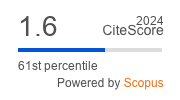Malaysian Journal of Mathematical Sciences, January 2015, Vol. 9, No. 1
Assessing Normality: Applications in Multi-Group Designs
Abdul R. Othman, H. J. Keselman and Rand Wilcox
Corresponding Email: oarahman@usm.my
Received date: -
Accepted date: -
Abstract:
Warr and Erich (2013) compared a frequently recommended procedure in textbooks: the interquartile range divided by the sample standard deviation, against the Shapiro-Wilk’s test in assessing normality of data. They found the Shapiro-Wilk’s test to be far superior to the deficient interquartile range statistic. We look further into the issue of assessing non-normality by investigating the Anderson-Darling goodness-of-fit statistic for its sensitivity to detect non-normal data in a multi-group problem where Type I error and power issues can be explored from perspectives not considered by Warr and Erich. In particular, we examined the sensitivity of this test for 23 non-normal distributions consisting of g- and h-distributions, contaminated mixed-normal distributions and multinomial distributions. In addition, we used a sequentially-rejective Bonferroni procedure to limit the overall rate of Type I errors across the multi-groups assessed for normality and defined the power of the procedure according to whether there was at least one rejection from among the three group tests, whether all three non-normal groups of data were detected and the average of the per-group power values. Our results indicate that the Anderson-Darling test was generally effective in detecting varied types of non-normal data.
Keywords: Non-normal data, Anderson-Darling, goodness-of-fit statistics, Power, Familywise control over the multiple significance tests for normality









